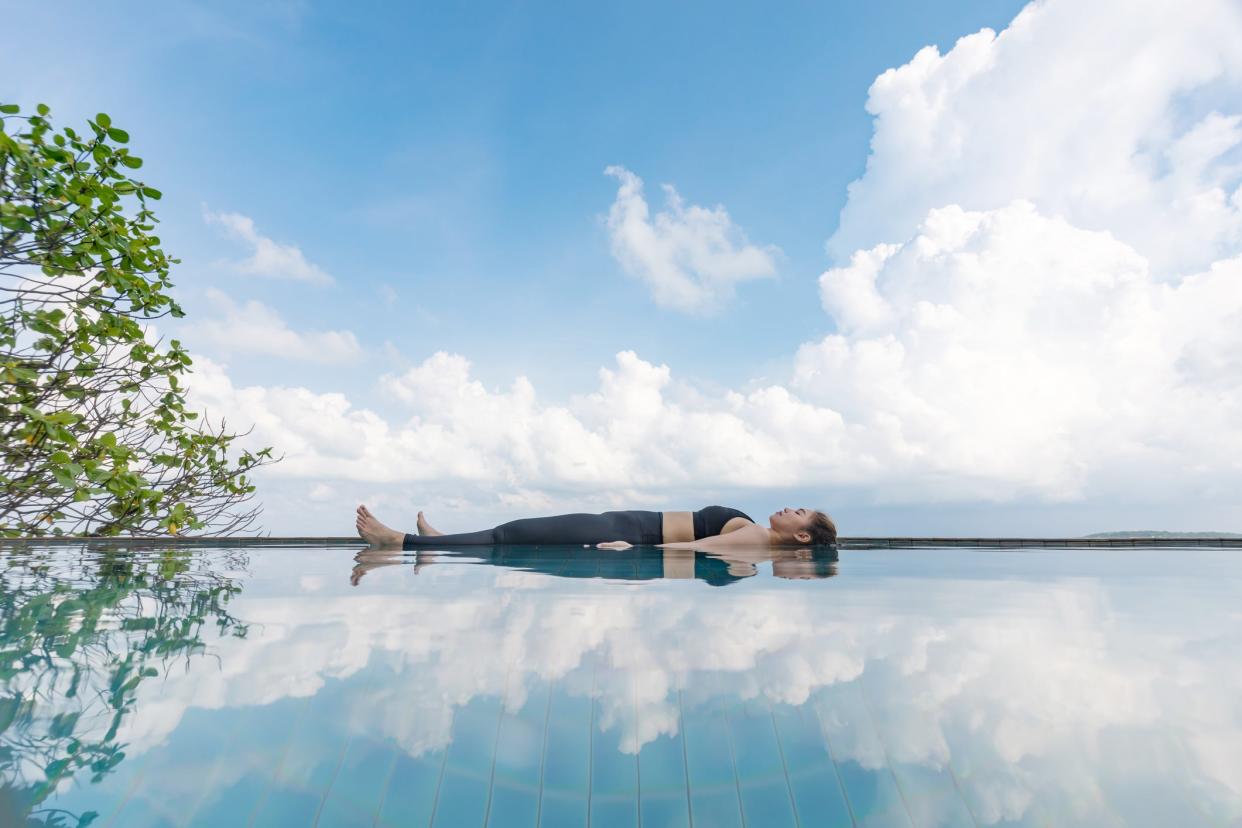What are shakti mats and why are the yoga Instagram elite talking about them?

This year has seen many of us seek out home-approved versions of all kinds of sports and holistic health fancies. When the first lockdown was announced in March and gym classes were put on hold, the trusty yoga mat was pulled out to aid all kinds of at-home workouts.
But the popularity of a different kind of mat has surfaced for an entirely different reason. The shakti mat is receiving considerable hype for those who claim it has the ability to release endorphins, soothe aches and pains and improve sleeping patterns.
That said, the way you obtain said health spoils is slightly unconventional: the mats consist of roughly 6,000 spikes and is described as a “bed of nails”. Users must push through a certain amount of discomfort by lying on the mat with bare skin exposed, or wearing a very thin layer of clothing. This is said to unlock the benefits of acupressure – an ancient Indian practice said to 'heal and detoxify the body’
The Instagram love for the these mats can be seen from the UK, to Germany and all the way to New Zealand. It was invented (or conceived through the mind of) a Swedish monk named Om Mokshanada, who reportedly worked as a juggler before he found his calling. It was created to emulate an ancient Indian practice of sleeping on beds of nails to increase pain tolerance, according to yoga instructor Dr Nitasha Buldeo.
Unlike the comparatively smoother yoga mat, the shakti mat is pressed with first-class ABS plastic spikes that are primarily intended to apply pressure to the neck, shoulders, back and feet. But, feel free to use it on any body part that you can – within reason.
Let’s not sugar coat it, using this piece of kit is not pain-free. For the first two minutes that you use it, you’ll experience prickly skin and warmth from the spikes but as your body sends blood to the areas that are most in need of love, the mat helps to facilitate “restoration”. By 20 minutes in, your muscles should be noticeably less tense and your body relaxed – at least, that's what fans of the mats report to feel.
A post shared by Robyn Harries (@robynjaneeh) on Sep 3, 2020 at 10:00pm PDT
Hannah Barrett, a leading yoga instructor, author and health & fitness specialist, says that while using an acupressure mat may feel odd, intense or uncomfortable at the beginning, the benefits are so worth it if you persevere.
“I find lying on one after a long day so grounding and relaxing. I tend to lie on one for 15-20 minutes before bed,” she says. “2020 has seen a huge rise in stress and anxiety due to COVID-19, coupled with lockdown and no access to massages, spas, yoga classes etc. This is a great alternative which you can use at home!”
“Be prepared for it to feel uncomfortable when you first get on it. Take some deep grounding breaths and before you know it your body will have relaxed and it should feel blissful."
A post shared by Shakti Acupressure Mat (@shaktimats) on Sep 14, 2020 at 1:28am PDT
Dr Nitasha Buldeo does, however, recommend that these mats aren’t to be used daily. “Various points on the body have very specific actions, and overstimulating any of them can be detrimental to health,” she warns.
Yoga and acupressure fans have taken to Instagram to praise the effects of using the mats, though.
“I find that this mat helps put me into a deep meditative state much quicker than if I were to try and meditate without it,” one posted.
Another said: “My back is bright red, burning and covered in a thousand tiny holes, but my sleep is better, my shoulders aren’t as tense and I feel so relaxed,” calling the use of a shakti mat “the perfect compliment to a long yoga practice”.
Branded shakti mats are available from the Shakti website (for £49, £29 for pillow equivalents) and Amazon , and other non-branded acupressure mats are sold by Cult Beauty and Selfridges for £70.
Read more


